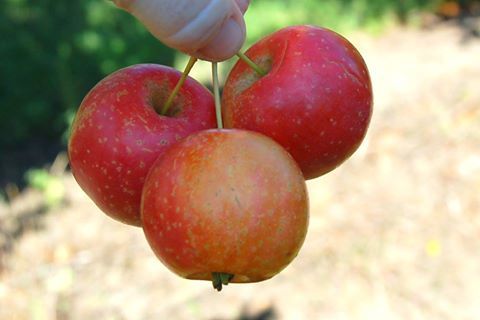
Hewe's Virginia Crabapple Tree
Delivery Options
- Bare Root trees ship Nationwide!
- Containers ship to WI, IA, IL, MI, MN
- Local Pickup is FREE
The description in William Coxe's 1817 book A View of the Cultivation of Fruit Trees describes it best: "The apple is of very small size; the form nearly round, the stem ling and thin, the skin a dull red, mixed with faint streaks of greenish yellow, and numerous white spots. The juice, although acid and austere to the taste when mixed with the flesh, becomes sweet and highly flavored when expressed from the pulp in the perfect maturity of the fruit."
We have never personally pressed the fruit (yet) to confirm this account but the fruit is astringent and slightly bitter and should primarily be used in cider production. The profile is listed below but as the tree was well known in 1817, this crabapple must have been popular in colonial America. The cider produced a cinnamon flavor that is sugary and fragrant. It is a surprise that such a small apple produces so much juice. The tree is vigorous and precocious and prone to abundant production. The image of a tree was taken in zip code 52346.
USDA Zone: 4-9
Mature Height: G.41 ~10-12' tall; Dwarf
Sun: Full Sun
Bloom Group: 3, Mid Season
Ripening Time: Late September- Early October
Pollination: Tree is semi self fertile
Cider Profile: Bitter-sharp Tannin: 1.9g/L, Acid: .91% TA, Sugar: °Brix 14.8

